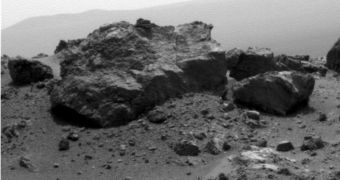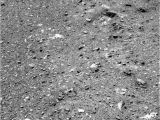After arriving at the rim of Endeavour Crater on August 9, the Mars Exploration Rover (MER) Opportunity began snapping a series of pictures of its surroundings. The robot is now acquainted with its new home, and ready to begin more in-depth studies.
The machine has been happily trekking along towards Endeavour Crater for more than three years. It made numerous stops along the way, studying space rocks that lay in rest on the Martian surface.
Currently, it is located on an outcrop an the large crater's rim called Spirit Point. The landscape feature got this name in honor of the MER Spirit, with which mission controllers at the NASA Jet Propulsion Laboratory (JPL) lost contact in early 2010.
Due to its position on the planet's surface, Opportunity conducted non-stop studies since it arrived at Mars, without having to enter hibernation mode for the winter. Even so, it took it seven years to analyze Victoria Crater and then move on to Endeavour.
The latter has been a target for exploration for many years, having been investigated with the NASA Mars Reconnaissance Orbiter (MRO) as well. Now, the rover can conduct geological studies, in a bid to determine whether and when liquid water flowed on the surface of Mars.
The crater has a diameter of 13 miles (21 kilometers), but the JPL team is not yet sure if the rover will attempt to make its way down its slopes. There are considerable risks associated with this maneuver, especially when considering the 20-minute delays that comes with Earth-Mars communications.
In the mean time, JPL mission controllers decided to start investigating the ejecta plume of a smaller crater near Endeavour, called Odyssey. At this time, the machine is approaching this batch of material, getting ready to study it with the tools on its robotic arm.
After these studies are concluded, Opportunity will most likely be moved as close to the large crater's edge as possible. Its cameras will then begin to investigate the structure, as well as the types of rock it contains. The data could provide insight into the way Mars evolved as a planet.
At its core, MER is a geology mission. This means that the both rovers were equipped with instruments that can take readings of various types of rocks, classify them, and conduct chemical analysis.
Both investigations robots arrived at Mars in 2004, for a three-month mission that was supposed to take them on 800-meter drives. However, the machines proved very resilient. Spirit drove for more than 4 miles before falling into a patch of loose sand called Troy.
Opportunity recently exceeded 33 kilometers (20.49 miles), which is more than 50 times the distance mission controllers expected it to travel.

 14 DAY TRIAL //
14 DAY TRIAL // 
